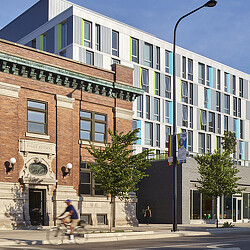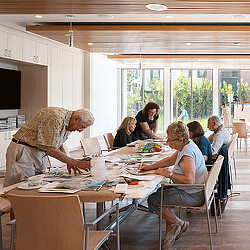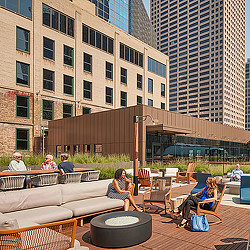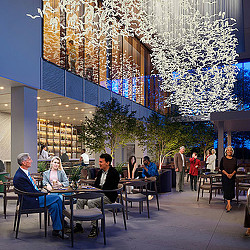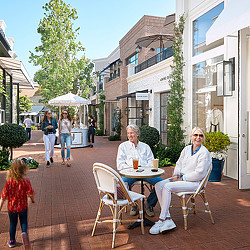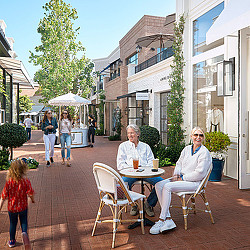Defining Active Adult: A Promising Housing Model for an Active Aging Future
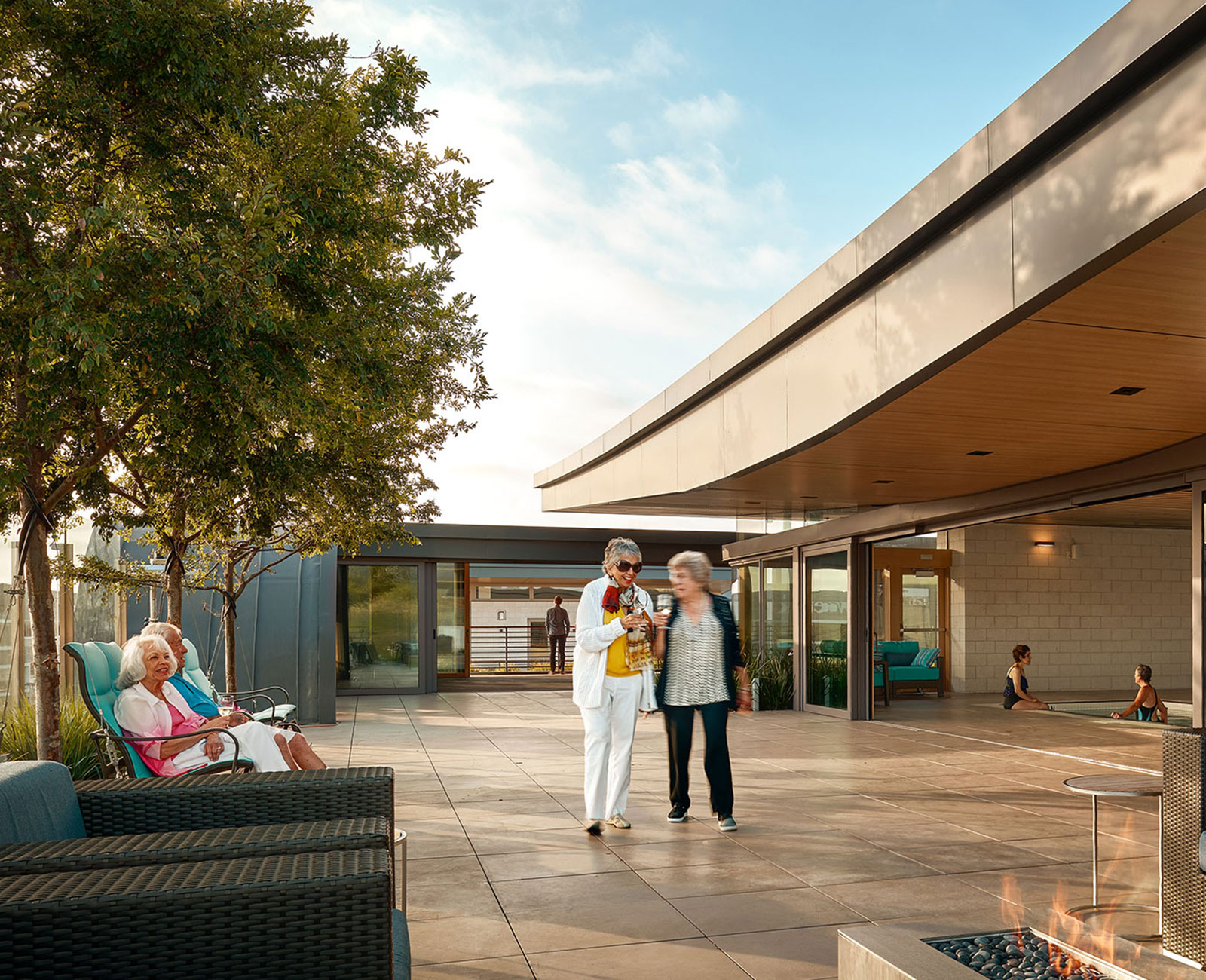
In the U.S., the senior living industry is at the precipice of major change. There is a demand surge on the horizon as the Baby Boomers become the largest generation in history to enter retirement, bringing with them a whole new set of market expectations and lifestyle desires. The cost of traditional senior living environments is already out of reach for most Americans, and the costs continue to push upward. And the most problematic challenge in the short-term: an industry-wide staffing shortage.
Active Adult is a rapidly evolving topic in response to these primary challenges — evolving both in how it is defined and in what role it will ultimately play in the future of aging. But what exactly is Active Adult?
The term is generally used as a label for age-restricted environments that do not meet the criteria or licensing requirements associated with traditional senior living models (meaning, Independent Living, Assisted Living, Memory Care, and Skilled Nursing). But there is no current baseline for what makes a community/property “Active Adult” beyond how it is marketed and managed. Amenities, infrastructure, and services are inconsistent property to property.
The Fair Housing Act’s “Housing for Older Persons” (55+) designation offers nothing more than a requirement based on age of the residents in a percentage of the units. In 2022, NIC (National Investment Center for Seniors Housing) went one step farther and issued a definition clarifying that Active Adult does not provide meals. So, age-restricted with no meals: this seems simple; but when we consider Active Adult in the larger context of a continuum of aging and care, the complexity in defining it begins to emerge — defining not only how it exists today, but also how this model might be applied in the future.
When Gensler published the white paper “Beyond Senior Living: Designing Communities for Inclusion” last spring, we immediately started drawing conclusions from the findings. In the study, we found four trends that all seem to point toward distributed care and services made possible through partnerships and colocation, self-management of care and services, and a priority for aging-in-community. In other words, they point to a decoupling of services and housing associated with the more traditional linear continuum of care. And thus, it seems a logical conclusion that Active Adult (with its lack of bundled services) will likely play a significant role in new senior living development into the near future.
Through many conversations with contacts, colleagues, and industry professionals, we’ve identified four ways Active Adult can be found in the marketplace. These are models that currently exist and are being marketed using the name “Active Adult”:
1. Resident-driven communities: These are age restricted neighborhoods typically compiled of privately-owned homes ranging in size, from small cottages to sizable single-family structures. These neighborhoods often have a clubhouse and/or wellness amenities, but do not include an operational model or formalized programming. There is no direct staff. These communities rely upon naturally-occurring community evolving from the resident population itself — a sense of neighbors taking care of each other.
This model dates to the 1960s with Sun City, Arizona, being possibly the most widely known example. At Sun City, commerce, healthcare infrastructure, entertainment venues, fitness, clubs, and organizations, etc. have evolved over time growing out of market demand by the number of aging residents colocated in the place. But even without the amenities that have grown up around Sun City, these age-restricted neighborhoods offer community and companionship, safe walking environments, slower traffic, and often a collaborative approach to landscaping and exterior maintenance.
2. The experience-driven retirement destination: Becoming more popular, these are lifestyle-oriented multifamily properties with no direct care or service package associated with them. Staffing in these properties varies dependent upon the lifestyle being offered, commonly including concierge services, scheduling of building amenities, activities and/or program management, maintenance and upkeep, and general property management/leasing at a minimum. And when not included within the property itself, these communities are often co-located with hospitality amenities like wellness spas, fitness gyms, restaurants, pubs, coffee shops, and entertainment venues.
This model seems to be geared toward a slightly younger demographic. Intended as a lifestyle decision, residents are trading the burden (as well as the inherent isolation) of owning a single-family home to downsize in a prime location, whether that be in a vibrant urban center, a charming town/village, or a destination resort. They are building community with neighbors of a similar age, with common interests, and who share a desired lifestyle.
Varcity at Purdue is an example of this experience-based model. Though being developed alongside Assisted Living and Memory Care, the ala-carte approach to services (and more specifically, meals) places the project squarely within the definition of Active Adult. This project offers a retirement experience — a means to connect with one’s alma mater, a way to pursue lifelong learning, an opportunity to engage with a younger generation, and a lifestyle of youth and curiosity on the edge of Purdue University in Indiana.
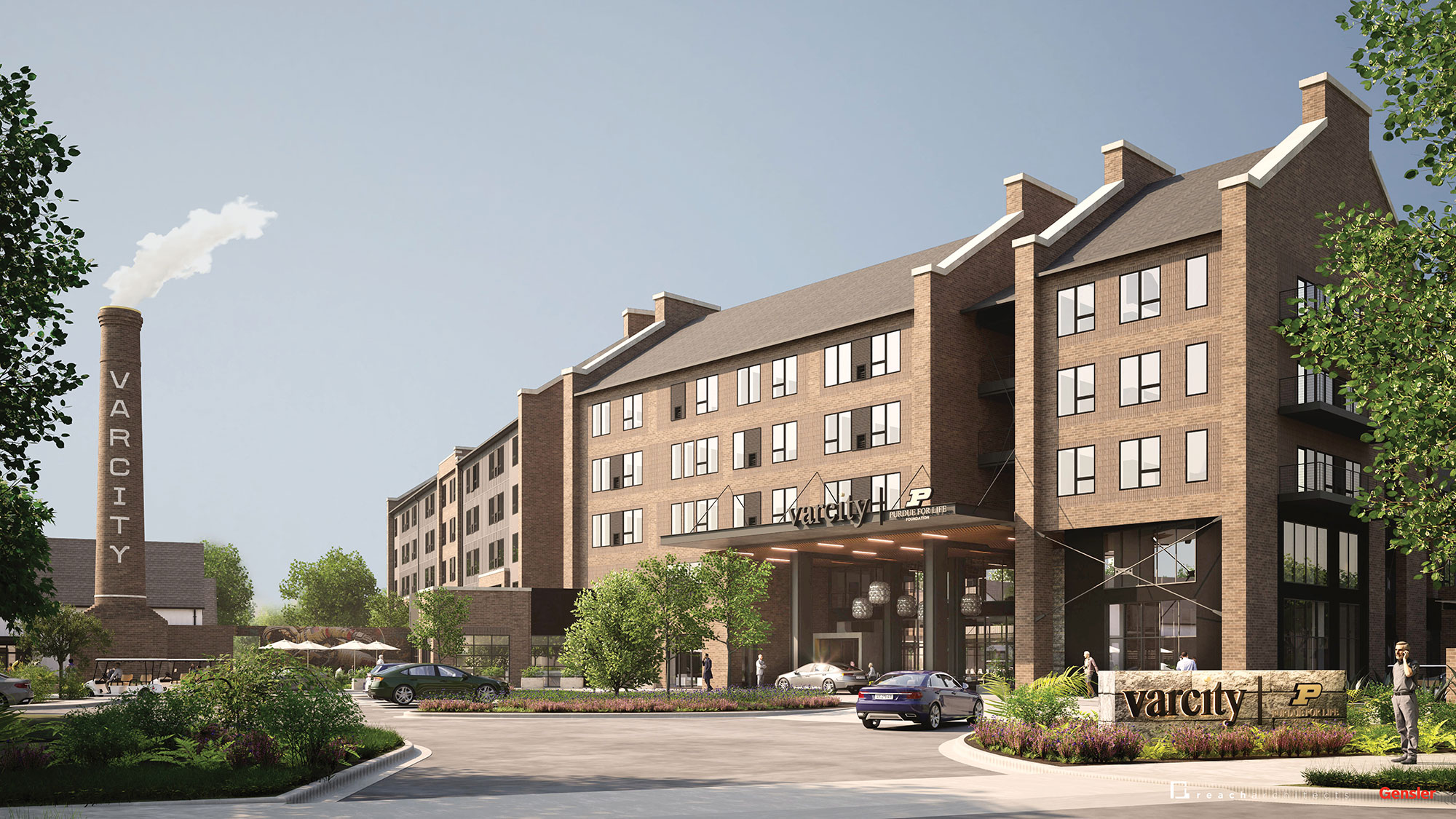
3. Mid-market offerings: In response to rising costs, these are modest multifamily buildings designed to create an affordable/attainable alternative to traditional senior living models. These communities are using the unbundled services approach of Active Adult to keep the costs down, while providing safe and age-friendly residences. Like the age-restricted neighborhoods, the residents themselves can help each other and maintain a baseline level of programming. The successful examples of these properties are often located near outside service providers and are placed within established communities to maintain existing relationships for the residents.
Town Hall Apartments in Chicago is a great example of this model. This project opened in late 2014, providing age-restricted affordable residences in a vibrant area just north of downtown historically home to a large portion of Chicago’s LGBTQ+ community. The project was developed in cooperation with (and located directly adjacent to) The Center on Halsted (a non-profit that provides services, programs, and advocacy for Chicago’s LGBTQ+ population.) Providing residents the ability to age gracefully within their community keeps them connected to a healthy, walkable urban lifestyle with access to amenities, such as healthcare and public transportation, that support their daily lives.
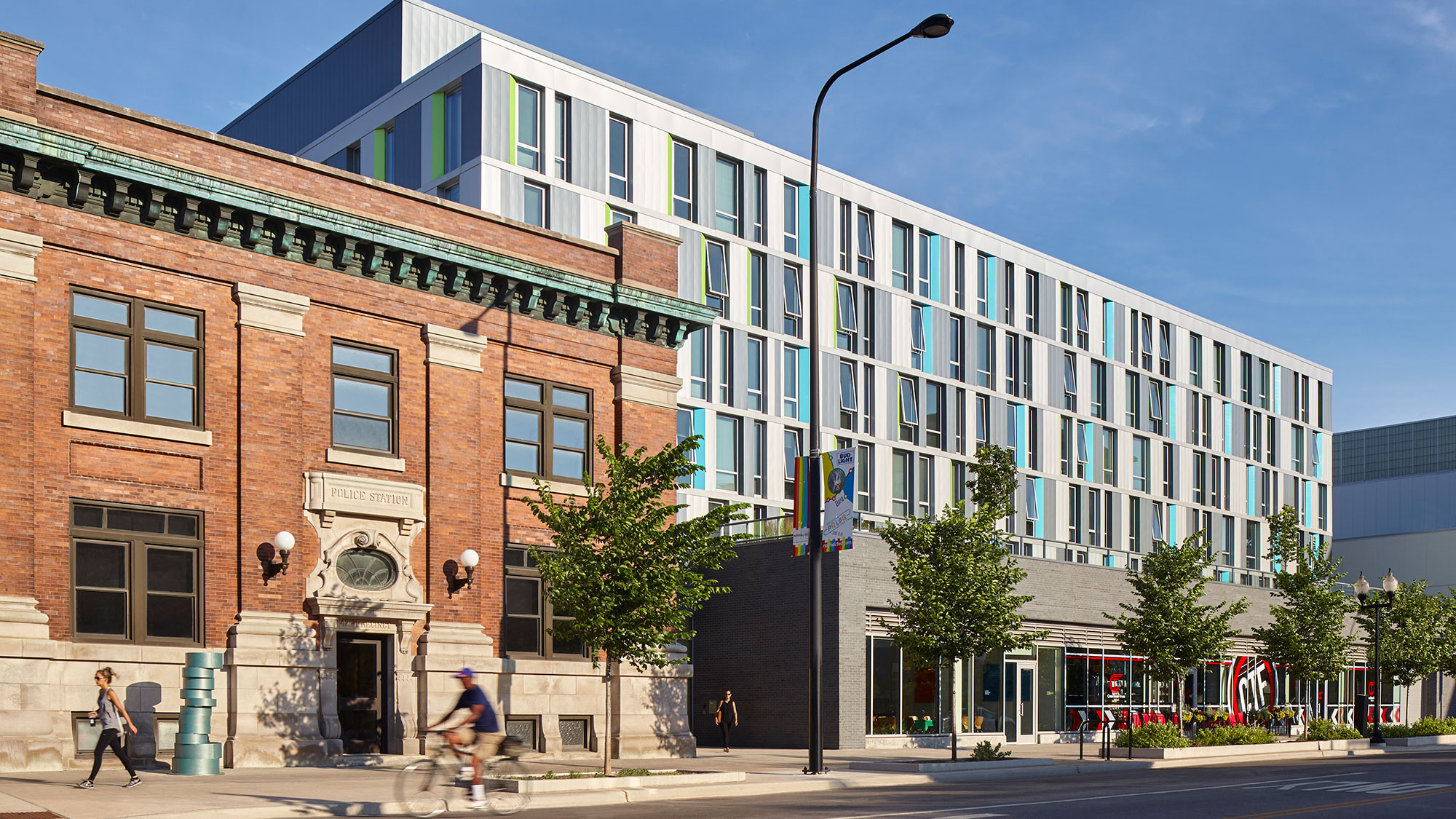
4. Unbundled Independent Living: Some full-continuum providers are looking to Active Adult as a new entry point into their overall care continuum offerings. By limiting the services bundled and included (dining being the most significant), the overall operational costs can be lowered, which translates directly to savings in monthly service fees. Market trends also seem to indicate that an unbundled ala-carte approach to services will appeal to the Baby Boomers’ desire for choice and self-management of their service package.
The architecture for these projects closely resembles Independent Living — the differentiators being within the service model itself (specifically, what exactly is included in a resident’s monthly service fee). Priority access and/or inclusion of higher care levels will vary property to property, but these are likely to be new offerings from established providers.
Mosaic by Willow Valley Communities in an example of this type. Sited in an urban downtown location in Lancaster, Pennsylvania, and featuring large high-rise units, this Active Adult project aims its marketing to younger active elders who prioritize a connected lifestyle. But Mosaic’s direct connection to the Willow Valley care continuum provides the security many residents are looking for when entering a Life Plan Community. But removing services like dining and wellness from the monthly service fees allows monthly rates to be kept low compared to a full Independent Living product. The services are available — they are simply added on in an ala-carte method, giving the resident more control and autonomy over how to allocate their monthly spending.
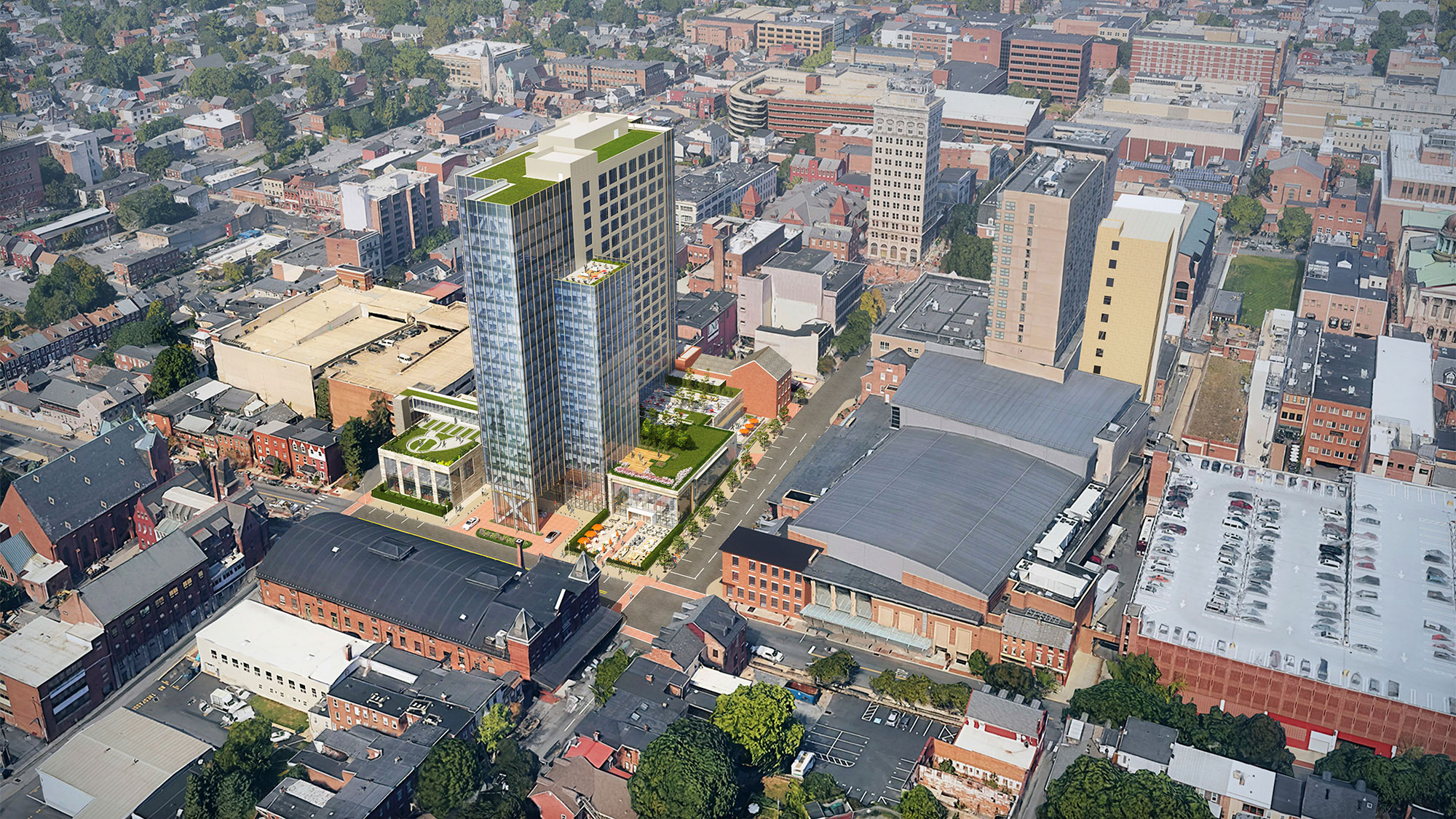
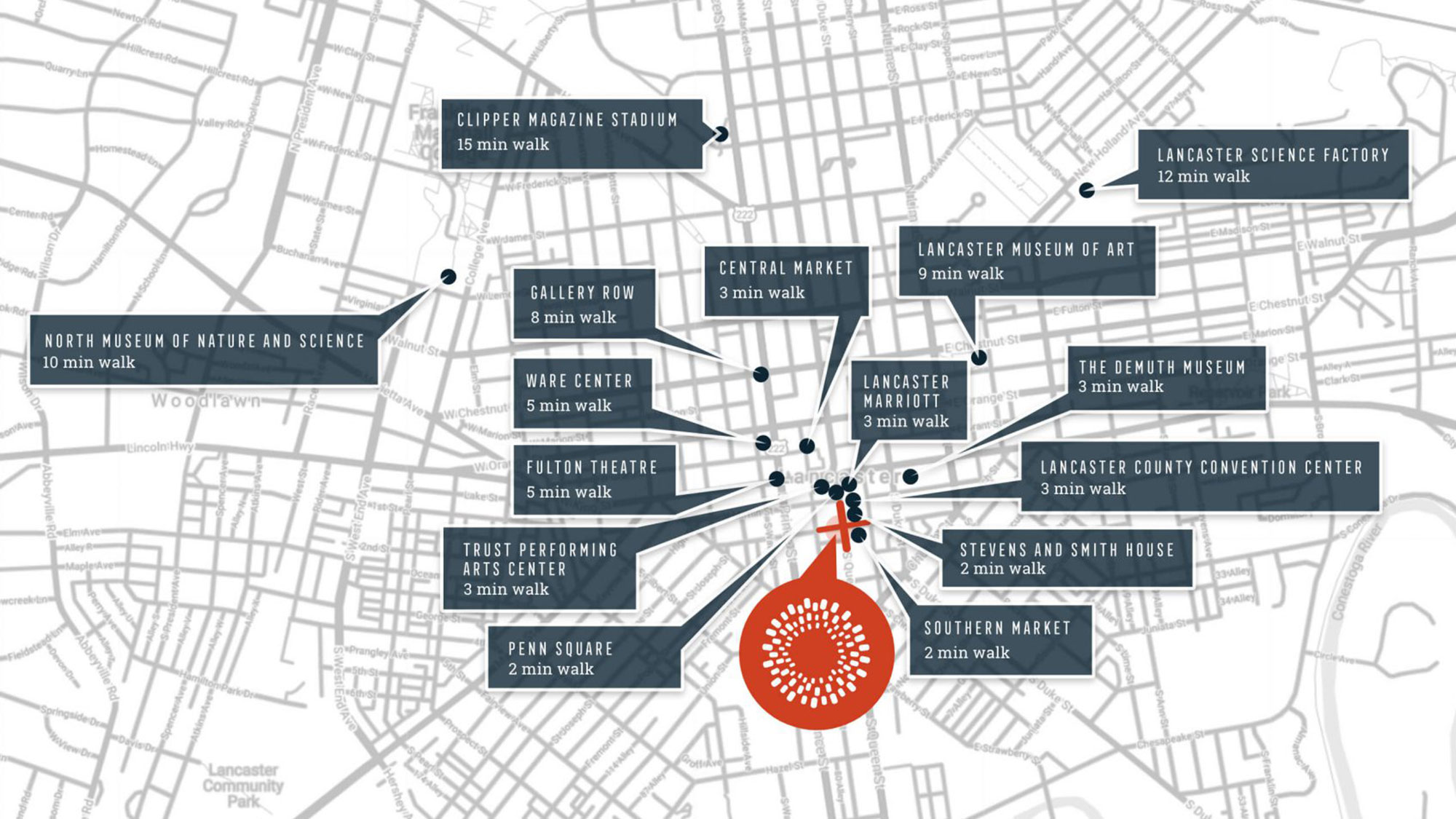
All four of these fit the definition of “age-restricted and do not include meals,” but they are very different development models and are likely to attract very different resident populations. And there are likely many other models that will evolve over the years to come.
Diversity in lifestyle options, price points, access to care, geographic location, housing type, ownership structure, and amenity offerings create a patchwork of living options for older adults. Active Adult (in one of its forms) looks to be the housing model that makes this possible.
For media inquiries, email .

